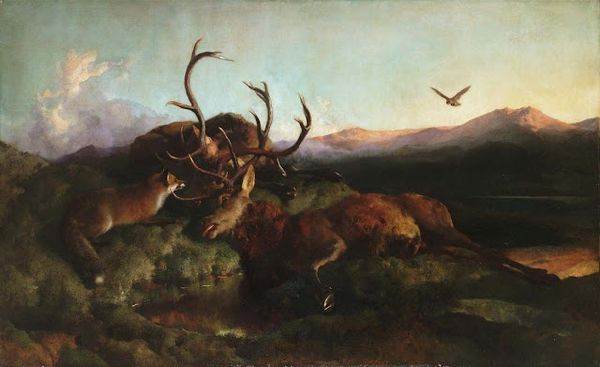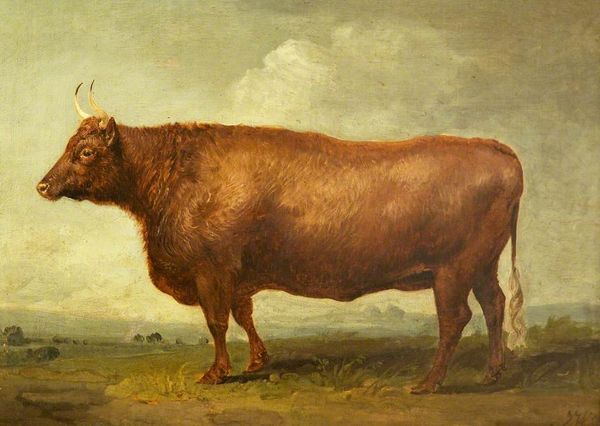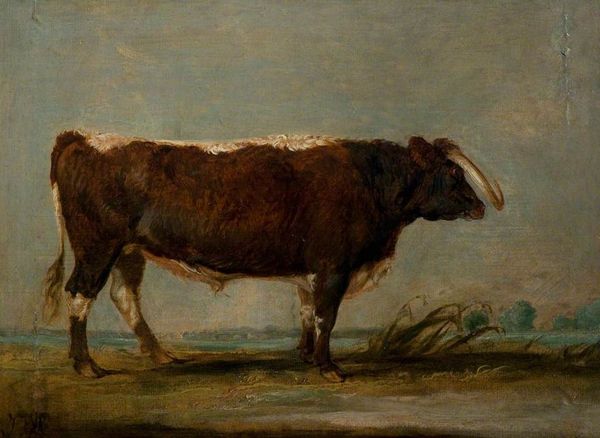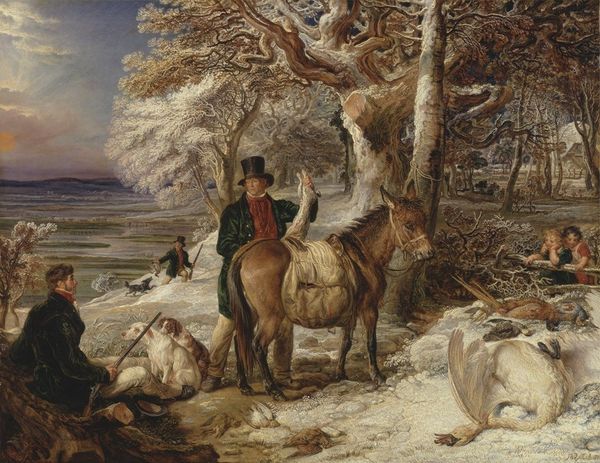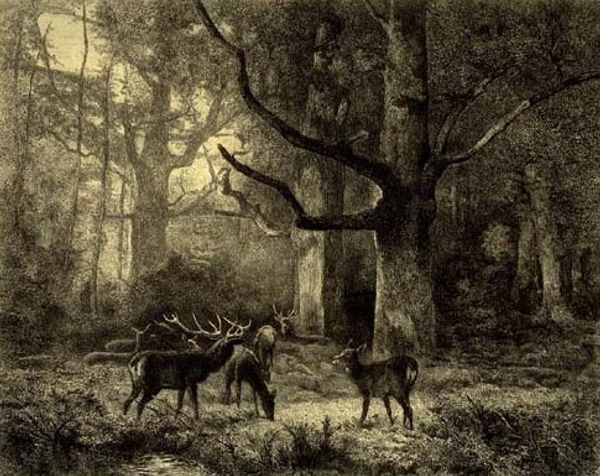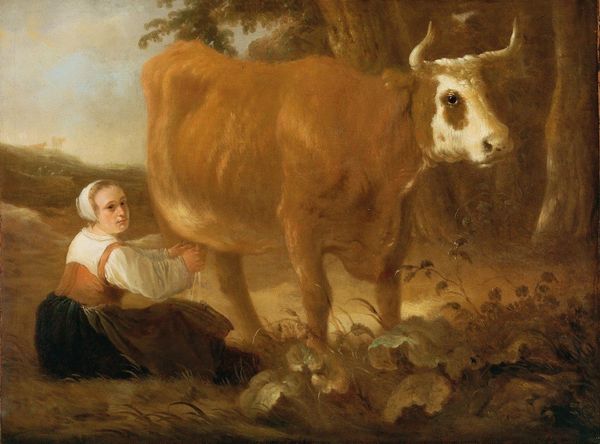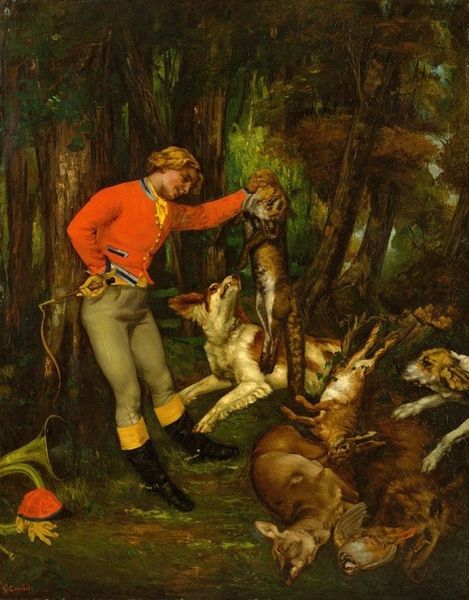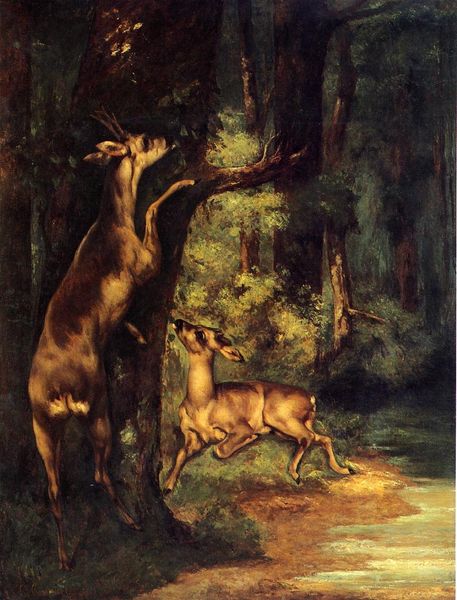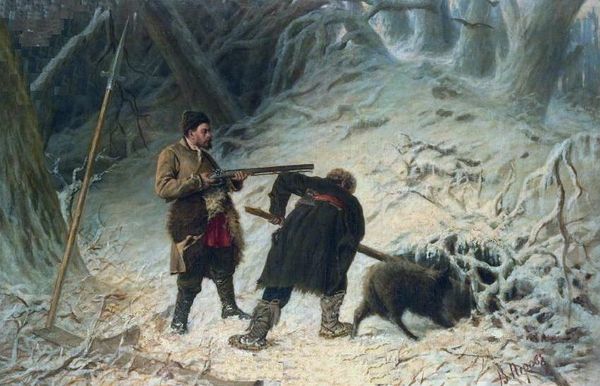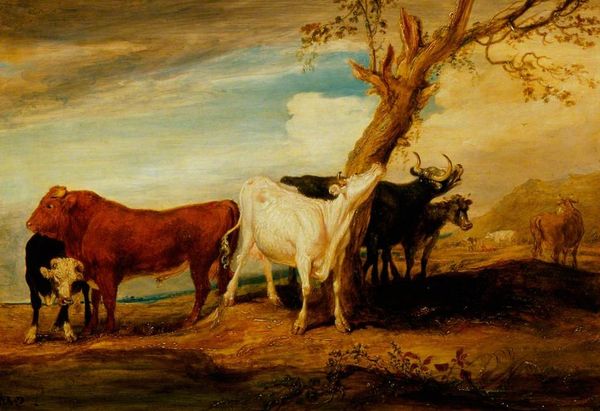
The German Huntsman 1859
0:00
0:00
gustavecourbet
Musée des Beaux-Arts de Lons-le-Saunier, Lons-le-Saunier, France
Copyright: Public domain
Editor: This is "The German Huntsman" by Gustave Courbet, from 1859, rendered in oil paint. The palette is predominantly earthy, and that slumped stag gives off such a melancholic atmosphere. What structural elements contribute to this feeling? Curator: Note how Courbet uses the dense, almost claustrophobic forest setting to confine the composition. Observe the hunter, positioned slightly off-center, a rigid diagonal against the fluid, organic shapes surrounding him. Editor: That juxtaposition of rigidity and fluidity is certainly striking. Curator: Consider the tonal range, too. The somber darks contrasted with the occasional burst of light falling on the stag create a dynamic visual rhythm. This oscillation reinforces the tension between the hunter and hunted. Editor: So, the formal aspects alone, such as light, shape, and composition, create this charged atmosphere? Curator: Precisely. Semiotically, the arrangement conveys the power dynamics between humanity and nature. The composition, materiality, and visual contrasts all work together to communicate this relationship. Does that influence your interpretation? Editor: Definitely. I see how limiting our focus to the visual and the relational composition unveils so much richness and nuance. I initially focused on the emotional impact, but this deep dive into structure is very helpful. Curator: Indeed, understanding these fundamental components allows for a richer, more grounded engagement with the work. Editor: Thank you for opening my eyes to that, it provides a more complex interpretation than where I started!
Comments
No comments
Be the first to comment and join the conversation on the ultimate creative platform.

